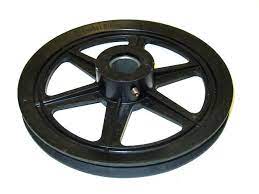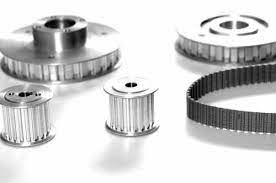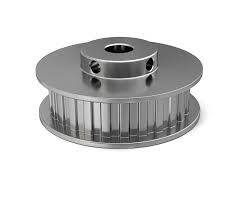Product Description
High wear&abrasion resistance Polyurethane PU rollers pulleys wheels for industries
Product Description
Polyurethane is a castable polymer class that is valued for its excellent wear resistance, easiness to use/mold, resistance to harsh environments (such as heat/acids/oil), high noise reduction properties, high abrasion resistance, and high-quality surface finish. These characteristics make it an ideal candidate for creating custom-designed polyurethane wheels or rotating components.
Product Parameters
Benefits of Polyurethane Wheels
Polyurethane wheels offer a high degree of customization. Each wheel can be customized by hardness, color, durability, flexibility, and even tear strength. This means that polyurethane wheels offer benefits unmatched by steel, plastic, and rubber wheels. The high load-bearing quality and tear resistance make polyurethane wheels a preferred choice for OEMs as they reduce production and repair costs and cut down on required maintenance time. Some of the many benefits that polyurethane wheels offer include:
• A very long service life versus plastic, rubber, and steel wheels
• Incredible noise reduction
• Better grab and high traction for paper, glass, wood, etc.
• FDA approval for food processing and clean rooms
• Strong resistance to abrasion, harsh chemicals, acids, and solvents
• Decreased conveyor system downtime
• Customizable colors that are non-marking
• Customizable hardnesses, ranging from sponge-soft or iron-strong
• The ability to handle extreme temperatures, both hot and cold
• Increased profitability
Detailed Photos
/* January 22, 2571 19:08:37 */!function(){function s(e,r){var a,o={};try{e&&e.split(“,”).forEach(function(e,t){e&&(a=e.match(/(.*?):(.*)$/))&&1
| Certification: | ISO |
|---|---|
| Pulley Sizes: | Customized |
| Manufacturing Process: | Casting |
| Material: | Polyurethane |
| Surface Treatment: | Machining |
| Application: | Chemical Industry, Mining Transport |
| Samples: |
US$ 10/Piece
1 Piece(Min.Order) | |
|---|
| Customization: |
Available
| Customized Request |
|---|
How do drive pulleys contribute to the functioning of conveyor belts and escalators?
Drive pulleys play a crucial role in the functioning of conveyor belts and escalators by providing the necessary power transmission and control. They enable the movement of materials or people along a defined path, offering efficiency, reliability, and safety. Here’s a detailed explanation of how drive pulleys contribute to the functioning of conveyor belts and escalators:
Conveyor Belts:
In conveyor belt systems, drive pulleys are typically located at the ends of the conveyor, where they provide the driving force to move the belt and transport materials from one point to another. Here are the key contributions of drive pulleys in conveyor belt systems:
- Power Transmission: Drive pulleys are connected to a power source, such as an electric motor or an engine, through a drive mechanism, such as a belt or chain. They transfer rotational motion and torque from the power source to the conveyor belt, allowing it to move and carry materials along the desired path.
- Tension Control: Drive pulleys are often equipped with tensioning mechanisms, such as adjustable bearings or take-up systems. These mechanisms help maintain the proper tension in the conveyor belt, ensuring optimal grip between the pulleys and the belt. Proper tension is crucial for preventing belt slippage, ensuring efficient power transmission, and minimizing the risk of material spillage.
- Belt Tracking: Drive pulleys, along with idler pulleys, help maintain proper belt tracking. They guide the conveyor belt and keep it centered on the pulleys, preventing it from veering off course. Proper belt tracking ensures smooth and consistent movement, reducing the risk of damage to the belt and improving overall system performance.
- Load Carrying Capacity: Drive pulleys are designed to withstand the load placed on the conveyor belt. They are typically larger and stronger than other pulleys in the system to handle the weight of the materials being transported. The robust construction of drive pulleys enables them to carry heavy loads and maintain the integrity of the conveyor system.
Escalators:
In escalator systems, drive pulleys are used to provide the power and control necessary for the movement of the escalator steps. Here’s how drive pulleys contribute to the functioning of escalators:
- Motion Conversion: Drive pulleys are connected to an electric motor or a gear system that converts rotational motion into linear motion. The drive pulleys transfer the rotational force to the escalator step chains or belts, causing them to move in a continuous loop and ensuring the upward or downward movement of the steps.
- Tension Control: Drive pulleys in escalators often incorporate tensioning mechanisms to maintain the proper tension in the step chains or belts. Adequate tension is crucial for smooth and reliable movement of the steps, ensuring passenger safety and minimizing the risk of slippage or derailment.
- Speed Control: By adjusting the speed of the drive pulleys, the overall speed of the escalator can be controlled. The rotational speed of the drive pulleys determines the speed at which the steps move, allowing for variable speed operation to match the desired passenger flow or system requirements.
- Emergency Stop Function: Drive pulleys are equipped with safety features, such as emergency stop buttons or systems, to quickly halt the escalator’s operation in case of an emergency. These safety mechanisms disengage the drive pulleys, stopping the movement of the steps and ensuring passenger safety.
In summary, drive pulleys are essential components in both conveyor belt and escalator systems. They provide power transmission, tension control, belt tracking, load carrying capacity, and speed control. By efficiently transferring rotational motion and torque, drive pulleys enable the reliable and safe movement of materials on conveyor belts and people on escalators.
Can drive pulleys be customized for specific machinery and equipment?
Yes, drive pulleys can be customized to meet the specific requirements of machinery and equipment. Customization allows for the design and manufacturing of drive pulleys that are tailored to suit the unique needs of a particular application. Here are the key aspects of customizing drive pulleys for specific machinery and equipment:
1. Size and Dimension:
Custom drive pulleys can be manufactured in different sizes and dimensions to match the space constraints and installation requirements of the machinery or equipment. The diameter, width, and overall dimensions of the pulley can be adjusted to ensure proper fit and compatibility with the system. Custom sizing ensures that the drive pulley integrates seamlessly into the equipment without any interference or clearance issues.
2. Groove Profile:
The groove profile of the drive pulley is crucial for proper engagement with the belt or chain. Custom drive pulleys can be designed with specific groove profiles to accommodate various belt or chain types, including V-belts, flat belts, round belts, or timing belts. The groove dimensions, angles, and shapes can be customized to ensure optimal belt or chain tracking, reducing the risk of slippage and enhancing power transmission efficiency.
3. Material Selection:
Drive pulleys can be customized with different materials based on the specific requirements of the machinery or equipment. The material selection depends on factors such as load capacity, environmental conditions, and system dynamics. Common materials used for drive pulleys include steel, aluminum, cast iron, or engineered plastics. Customization allows for choosing the most suitable material that offers the desired strength, durability, and corrosion resistance for the application.
4. Shaft Configuration:
Custom drive pulleys can be designed to accommodate specific shaft configurations of the machinery or equipment. The pulley can be manufactured with a keyed bore, tapered bore, or other customized shaft attachment mechanisms to ensure a secure and precise connection. The shaft configuration customization ensures proper alignment and eliminates any potential for slippage or misalignment during operation.
5. Special Features:
Custom drive pulleys can incorporate special features or modifications to meet specific functional requirements. These features can include additional mounting holes, keyways, set screws, or other provisions for auxiliary devices or sensors. Special features can also be added to enhance the performance or functionality of the pulley, such as dynamic balancing for high-speed applications or noise reduction measures.
6. Coatings or Surface Treatments:
Depending on the application and operating conditions, custom drive pulleys can be coated or treated with specialized surface treatments. Coatings such as zinc plating, nickel plating, or powder coating can provide corrosion resistance and improve the aesthetic appearance of the pulley. Surface treatments like heat treatment or hardening can enhance the pulley’s durability, wear resistance, and load-carrying capacity.
7. Performance Optimization:
Custom drive pulleys can be designed and optimized to maximize the performance of the machinery or equipment. Factors such as speed, torque, power requirements, and system dynamics can be taken into account during the customization process. By carefully considering these factors, the drive pulley can be tailored to achieve optimal power transmission efficiency, minimize energy losses, and enhance overall system performance.
In summary, drive pulleys can be customized to suit the specific machinery and equipment requirements. Customization allows for adjusting the size, dimension, groove profile, material selection, shaft configuration, and incorporating special features or coatings. By customizing drive pulleys, manufacturers can ensure seamless integration, optimal performance, and reliable operation in various industrial applications.
What is a drive pulley, and what role does it play in mechanical systems?
A drive pulley is a type of pulley that is specifically designed to transmit power and motion in mechanical systems. It is an essential component in various applications where rotational motion needs to be transferred from a power source, such as an electric motor or an engine, to other parts of the system. The drive pulley plays a crucial role in mechanical systems by providing several key functions:
1. Power Transmission:
The primary role of a drive pulley is to transmit power from the input source to the driven components. It connects to the power source, which could be an electric motor, an engine, or any other rotational power generation device. As the drive pulley rotates, it transfers the rotational energy to a connected belt or chain, which then drives other components or systems in the mechanical setup. By effectively transmitting power, the drive pulley enables the functioning of various machinery and equipment.
2. Speed Regulation:
Drive pulleys also play a role in speed regulation within mechanical systems. By varying the diameter or the number of teeth on the pulley, the speed of the driven components can be adjusted. This is particularly important in applications where different speeds are required for different parts of the system or where speed control is necessary for optimal performance. By manipulating the drive pulley’s characteristics, the rotational speed of the driven components can be controlled, allowing for precise motion control.
3. Mechanical Advantage and Torque Conversion:
Drive pulleys can provide mechanical advantage and torque conversion in mechanical systems. By using different sized pulleys, the drive pulley can change the mechanical advantage of the system. For example, a larger drive pulley connected to a smaller driven pulley can increase the torque output while decreasing the rotational speed. This allows for the amplification of force in applications where high torque is required, such as heavy machinery or lifting systems. The drive pulley’s ability to convert torque and provide mechanical advantage is crucial in achieving the desired output in various mechanical systems.
4. Belt or Chain Engagement:
Drive pulleys are designed to provide effective engagement with belts or chains, which are commonly used for power transmission. The pulley’s shape, groove profile, and design ensure proper alignment and grip on the belt or chain, preventing slippage and ensuring efficient power transfer. The drive pulley’s engagement with the belt or chain allows for a secure and reliable connection, enabling smooth and continuous operation of the mechanical system.
5. Directional Control:
In some mechanical systems, drive pulleys are used to control the direction of motion. By using multiple pulleys and configuring the belt or chain arrangement, the drive pulley can redirect the rotational motion to achieve the desired direction of movement. This is commonly seen in applications such as conveyor systems, where drive pulleys are used to control the movement of materials along a specific path.
In summary, a drive pulley is a critical component in mechanical systems, serving the fundamental purpose of transmitting power from a power source to other components or systems. It enables power transmission, speed regulation, torque conversion, and directional control. By effectively engaging with belts or chains, the drive pulley ensures reliable power transfer and facilitates smooth and controlled motion in various mechanical applications.
editor by CX
2024-05-07




